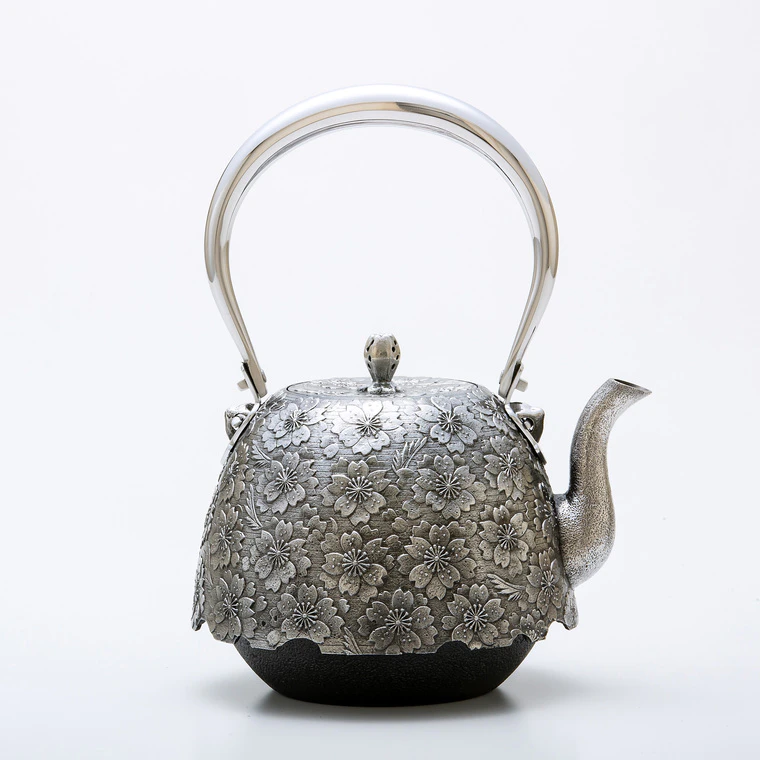Nambu Iron Sand Kettle with Double Cherry Blossom Design
Year.2024Morihisa Suzuki
1972 -- Metalwork
- Price Range Please Inquire
- Awards at Japan Kōgei Assoc. Exhibitions : 1
About the Artwork
The production of Nambu Ironware started during the Edo period (1603 - 1868), later than other production areas such as Kyoto.
Although there were already many standard forms of ironware, the artisans of Nambu Ironware created this hanging bell-shaped form as their original form and named it the "Nambu form". This form, bringing together the high technology of Nambu Ironware, is a flagship model of which all of the ironware studios in Morioka are making. The large and uneven double cherry blossoms are perfect patterns for spring.
Description
-
CategoryMetalwork
-
MaterialsIron sand, Iron
-
Year presented2024
-
Paulownia BoxIncluded
-
Artist SignatureSigned (name of artwork, paulownia box)
Techniques Used
Clay mold casting
In clay mold casting (sōgata), a symmetrical mold is produced by rotating a template called a strickle board in a mixture of sand and clay to shape the walls of the mold. Clay mold casting is predominantly used to produce tea ceremony kettles and temple bells. After the piece is removed from the mold, it is heated and painted with lacquer (urushi) or a solution of iron, vinegar, and alcohol known as ohaguro (“teeth blackening liquid”) to produce a unique, dark finish.

